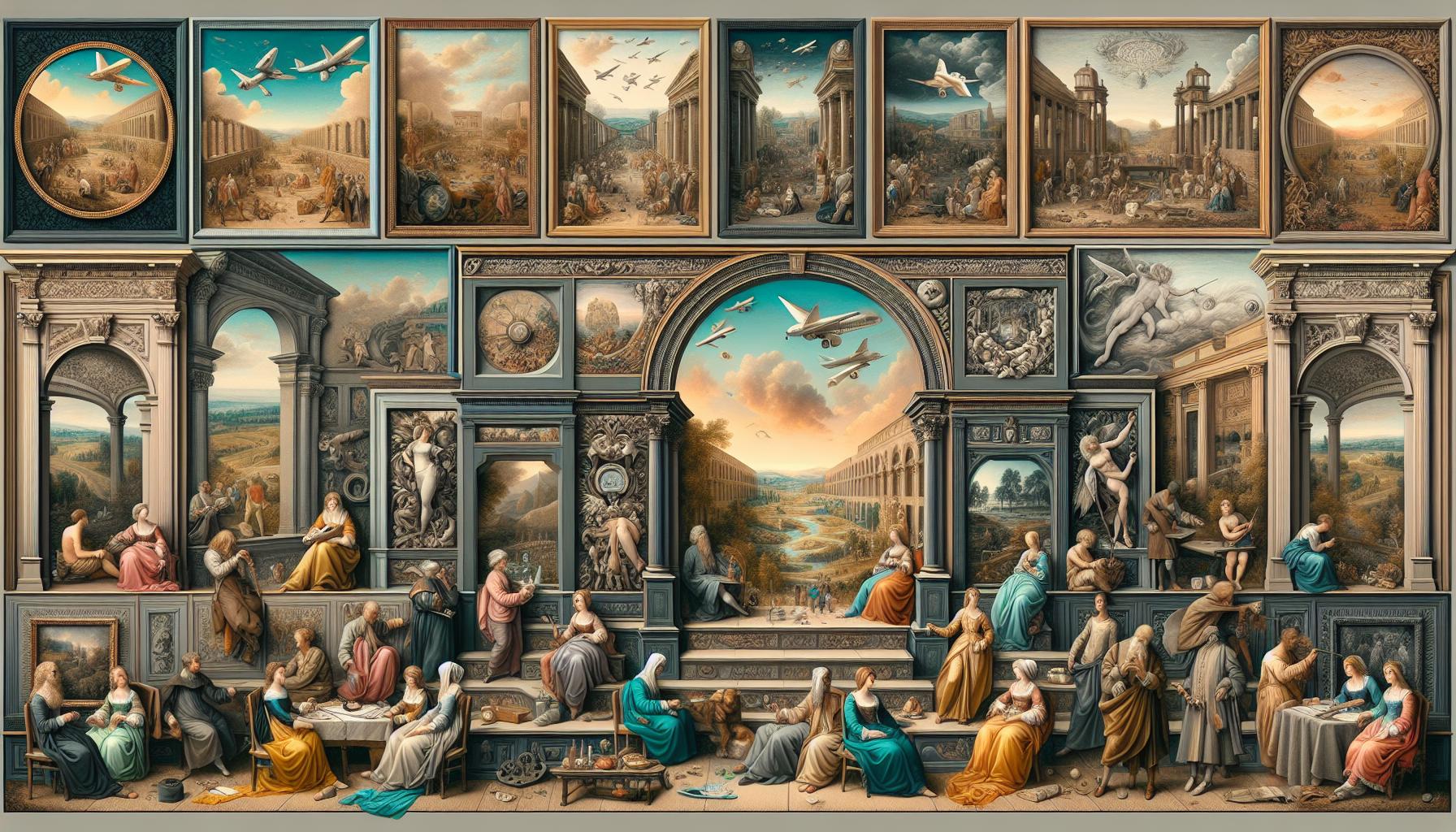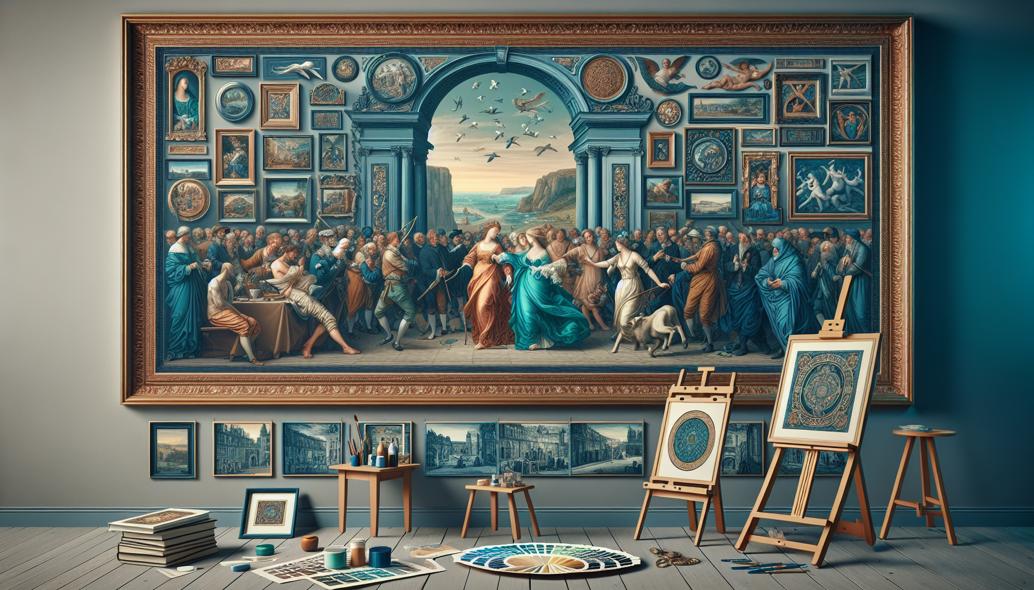The Evolution of Picture Frames - From Baroque to Modern Designs
Discover the captivating evolution of picture frames, from opulent Baroque designs to sleek modern styles. Explore how changing artistic philosophies and technological advancements have shaped this essential element of art presentation. Join us on this fascinating journey!

The Evolution of Picture Frames - From Baroque to Modern Designs
The captivating world of picture frames extends far beyond mere borders decorating our cherished art and photos. The evolution of picture frames encapsulates significant changes in artistic philosophies, socio-political contexts, and technological advancements. This post aims to delve into the fascinating journey of picture frames, tracing their development from elaborate Baroque designs to sleek modern styles and examining their impact on art presentation.
Picture Frames as Art
Picture frames have been used for centuries to enhance and protect artworks. Initially, frames were handcrafted with meticulous attention to detail, often reflecting the artistic styles and social milieu of their time. From grandiose Baroque frames symbolizing opulence to minimalistic modern designs emphasizing clean lines and simplicity, the evolution of picture frames is a fascinating tale of artistic and cultural transformation.
Frame History: The Early Days
The use of frames dates back to the ancient Egyptians, who framed their artwork not for decorative purposes but for preservation. Moving forward to the Renaissance period, picture frames began to take shape as ornate wooden structures that reflected the grandeur and opulence of the artworks they encased. This period saw the advent of gilded frames, which, through their intricate designs, often told stories paralleling the narratives in the art.
Baroque Frames: Opulence and Grandeur
The Baroque period, spanning from the late 16th century to the early 18th century, marked a significant evolution in frame design. Characterized by grandeur, drama, and movement, Baroque frames were typically lavish and intricate. They often featured elaborate carvings, scrolling acanthus leaves, and gilded finishes that mirrored the intensity of Baroque art itself.
Baroque frames not only served to enhance the visual appeal of the artwork but also acted as a testament to the patron's wealth and status. They were often commissioned by the elite, who sought to display their prominence through the ostentatious presentation of their art collections.
The Transition: Rococo to Neoclassical
As the Baroque period waned, the Rococo style emerged in the early 18th century, bringing with it a lighter and more playful approach. Rococo frames, with their asymmetrical designs and whimsical motifs, represented a shift towards a more decorative and ornamental style.
By the late 18th century, the Neoclassical movement took hold, drawing inspiration from classical antiquity. Neoclassical frames featured cleaner lines, symmetry, and more restrained ornamentation, reflecting the era's pursuit of elegance and rationality. This transition marked a move towards a more structured and refined aesthetic in frame design.

The Industrial Revolution: Mass Production and Accessibility
The advent of the Industrial Revolution in the 19th century brought about significant changes in frame production. Advances in manufacturing technology allowed for the mass production of frames, making them more accessible to the general public. This democratization of art presentation meant that middle-class households could now afford to frame their art and photographs.
During this period, there was a proliferation of various frame styles, driven by both industrial capabilities and the diverse artistic movements of the time. From the ornate Victorian frames to the simpler Arts and Crafts designs, this era showcased a wide range of stylistic expressions in frame design.
Modern Design: Minimalism and Functionality
The 20th century saw a radical shift in frame design with the advent of modernism. Modern design emphasized simplicity, functionality, and the intrinsic beauty of materials. This era introduced frames that were often stark and unornamented, serving to highlight the artwork itself rather than competing for attention.
Influenced by movements such as Bauhaus and De Stijl, modern frames embraced clean lines, geometric shapes, and industrial materials like metal and glass. This minimalist approach to frame design aligned with the broader Modernist ethos of "form follows function."
Contemporary Frame Design: Blending the Old and the New
Today, frame design continues to evolve, blending traditional craftsmanship with contemporary aesthetics. There is a growing appreciation for both vintage frames, with their historical and artistic value, and modern frames, with their sleek and minimalist appeal.
Contemporary frames often incorporate a variety of materials and techniques, reflecting a fusion of artistic influences from different eras. This blend offers a versatile range of options for art presentation, allowing individuals to choose frames that best complement their personal style and the specific artwork.
The Impact of Frame Design on Art Presentation
The design of a picture frame plays a crucial role in the overall presentation and perception of the artwork. An appropriately chosen frame can enhance the visual impact of the piece, creating a cohesive and harmonious presentation. Conversely, an unsuitable frame can detract from the artwork, disrupting its aesthetic balance and undermining its visual appeal.
Baroque frames, with their elaborate designs, draw attention to the grandeur and complexity of the artwork, reinforcing its significance. Modern frames, with their understated elegance, allow the artwork to take center stage, promoting a more introspective and focused viewing experience.
Choosing the Right Frame for Your Artwork
When selecting a frame for your artwork, consider both the style of the artwork and the environment in which it will be displayed. A frame should complement the artwork, enhancing its visual appeal without overwhelming it.
- Baroque and Rococo Art: Intricate, ornate frames that reflect the richness of the artwork.
- Neoclassical Art: Elegantly designed frames with clean lines and classical motifs.
- Modern and Contemporary Art: Simple, unornamented frames that highlight the artwork's minimalistic aesthetic.
- Photography and Prints: Versatile frames that can range from modern minimalist to vintage styles, depending on the artistic intent.
Preservation and Care of Art Frames
In addition to their decorative function, frames also play a critical role in preserving and protecting artwork. Factors such as humidity, light exposure, and handling can all impact the longevity of both the frame and the artwork it holds.
- Humidity Control: Ensure that frames are placed in environments with stable humidity levels to prevent warping and damage to both the frame and artwork.
- Light Protection: Use UV-protective glass or acrylic to shield the artwork from harmful light exposure.
- Regular Maintenance: Clean frames regularly with appropriate materials to preserve their appearance and structural integrity.
Conclusion
The evolution of picture frames from the Baroque period to modern designs is a testament to the ever-changing landscape of artistic expression and cultural values. From the opulent and intricate frames of the Baroque era to the minimalist and functional designs of modernism, the journey of frame design reflects broader socio-cultural shifts and technological advancements. Understanding this evolution not only enriches our appreciation of frame craftsmanship but also informs our choices in art presentation, enabling us to enhance and preserve the beauty of our cherished artworks.
By recognizing the historical context and artistic significance of different frame styles, we can make more informed decisions in selecting frames that complement and elevate our artwork. As we continue to explore and experiment with frame design, we contribute to the ongoing dialogue between art, history, and aesthetics.
Enjoyed this deep dive into the history and evolution of picture frames? Share your thoughts and let us know how you choose the perfect frame for your artworks!
